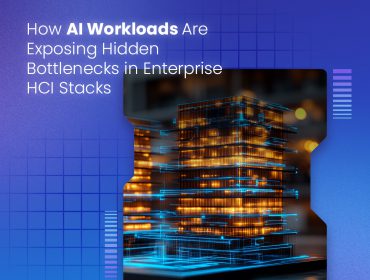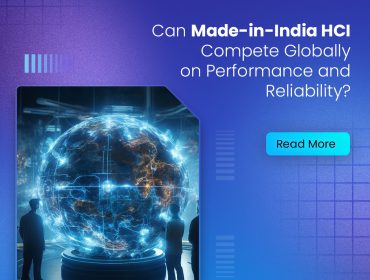In recent years, deep learning has revolutionized the field of computer vision. The ability of deep neural networks to learn from vast amounts of data and extract meaningful patterns and features from images has opened up new possibilities for various applications. From self-driving cars to medical imaging, deep learning infrastructure has become the backbone of cutting-edge computer vision systems. This article explores the advancements in deep learning infrastructure and its diverse applications in the field of computer vision.
What is Deep Learning?
Deep learning is a subset of artificial intelligence (AI) that focuses on training neural networks to perform complex tasks. Inspired by the human brain’s structure, deep learning models consist of multiple layers that process and transform data, enabling them to recognize patterns and make decisions with minimal human intervention. In computer vision, deep learning algorithms analyze visual data to identify objects, detect anomalies, and even predict future events.
Evolution of Deep Learning Infrastructure
The development of deep learning infrastructure has been a crucial factor in the rapid progress of computer vision. In the early days, training deep neural networks was computationally intensive and time-consuming. However, with advancements in hardware and software, researchers and engineers have been able to build more efficient and powerful systems for deep learning tasks.
GPUs and TPUs: The Powerhouses of Deep Learning
Graphics Processing Units (GPUs) and Tensor Processing Units (TPUs) have emerged as game-changers in deep learning. These specialized processors are designed to handle complex mathematical computations involved in training deep neural networks. Their parallel processing capabilities significantly accelerate the training process and reduce the time it takes to develop accurate computer vision models.
Distributed Computing for Scalability
As deep learning models grow larger and require more data, traditional computing resources may become insufficient. Distributed computing allows the distribution of deep learning tasks across multiple machines, enabling scalability and faster processing times. This approach is particularly valuable for training large-scale computer vision models used in tasks like object detection and image segmentation.
Model Optimization Techniques
Model optimization is crucial to achieve efficient and accurate deep learning models for computer vision. Techniques like weight pruning, quantization, and knowledge distillation help reduce model size, improve inference speed, and enhance performance without sacrificing accuracy. Optimization ensures that deep learning models are deployable on resource-constrained devices, such as edge devices in Internet of Things (IoT) applications.

Transfer Learning: Leveraging Pre-trained Models
Transfer learning has become a fundamental technique in the computer vision domain. Instead of training a model from scratch for a specific task, transfer learning allows leveraging pre-trained models that have already learned general features from large datasets. By fine-tuning these models on domain-specific data, developers can achieve remarkable performance with relatively little training time and data.
Computer Vision Applications
– Autonomous Vehicles: Navigating the Roads
Self-driving cars rely heavily on computer vision to perceive their surroundings and make real-time decisions. Deep learning algorithms process data from various sensors, such as cameras and LIDAR, to detect pedestrians, vehicles, and obstacles, ensuring safe and efficient navigation.
– Facial Recognition: Enhancing Security
Facial recognition technology has found applications in security systems, mobile devices, and social media platforms. Deep learning-based facial recognition systems can accurately identify individuals, making them invaluable in law enforcement and authentication processes.
– Medical Imaging: Transforming Healthcare
Deep learning models have demonstrated exceptional performance in medical imaging tasks like cancer detection, radiology, and pathology analysis. They assist healthcare professionals in making accurate diagnoses and devising effective treatment plans.
– Augmented Reality: Bridging the Physical and Digital Worlds
Augmented reality (AR) overlays virtual objects onto the real-world environment, providing a seamless interactive experience. Deep learning enables AR systems to recognize and track objects, creating a cohesive blend of the virtual and physical worlds.
– Agricultural Automation: Optimizing Crop Yield
Computer vision applications in agriculture help optimize crop yield and minimize resource usage. Deep learning models can identify crop diseases, assess plant health, and automate tasks like fruit picking, streamlining agricultural operations.
Challenges and Limitations of Deep Learning in Computer Vision
While deep learning has achieved remarkable success in computer vision, it still faces challenges and limitations. Handling occlusions, dealing with limited data, and ensuring interpretability are some of the ongoing concerns that researchers are addressing to enhance the reliability and robustness of computer vision models.
Future Directions in Deep Learning Infrastructure
As the demand for more sophisticated computer vision systems continues to grow, the future of deep learning infrastructure looks promising. Advancements in quantum computing, neuromorphic hardware, and hybrid models integrating classical and quantum computing could unlock even greater potential for the field of computer vision.

Conclusion
Deep learning infrastructure has ushered in a new era of possibilities for computer vision applications. The advancements in hardware, model optimization techniques, and the application of transfer learning have made deep learning models more accessible, efficient, and accurate. From enhancing security to transforming healthcare, computer vision powered by deep learning is reshaping industries and our daily lives.











